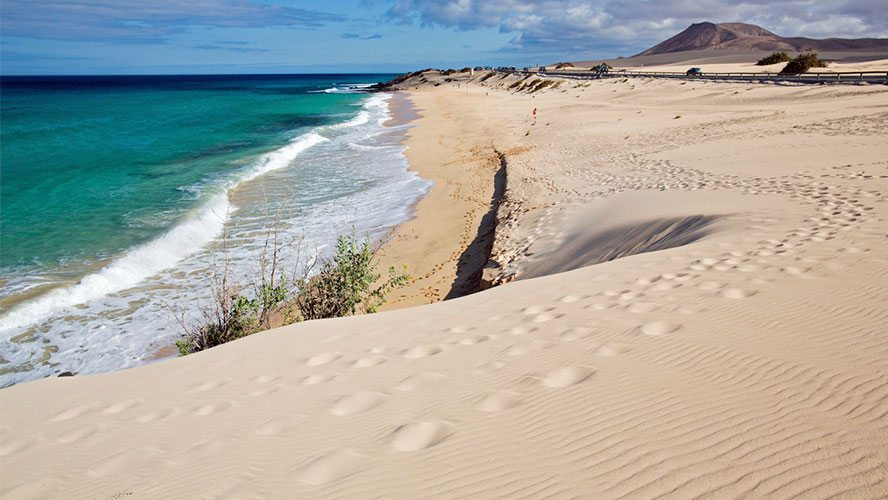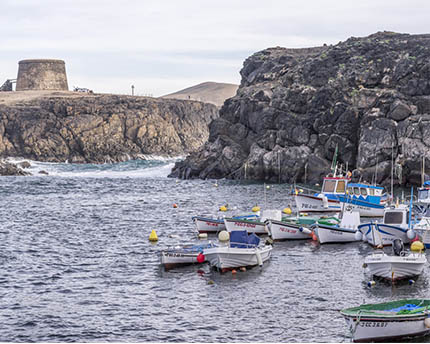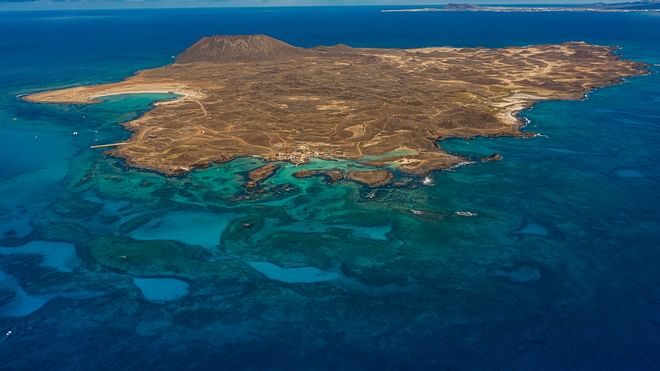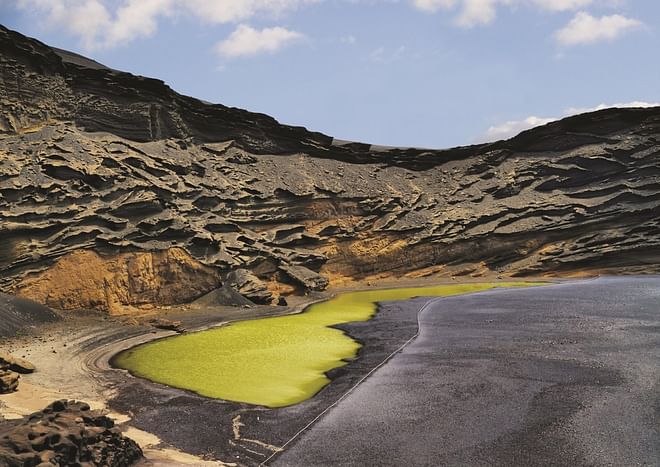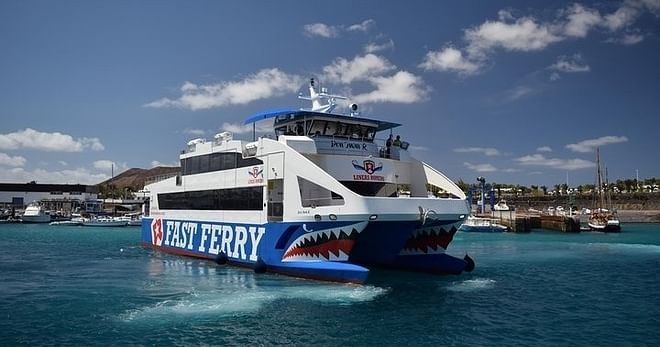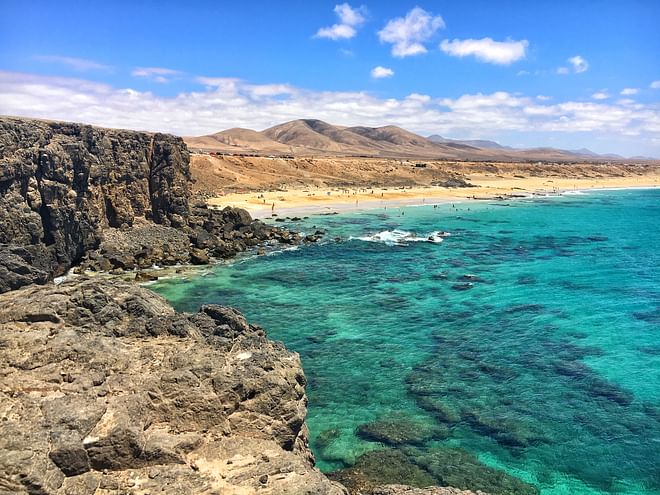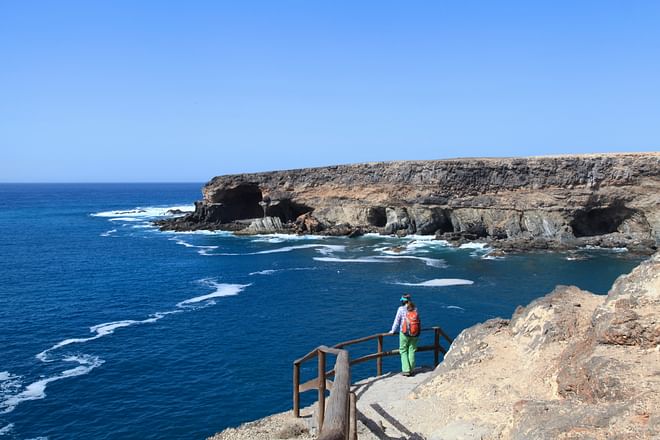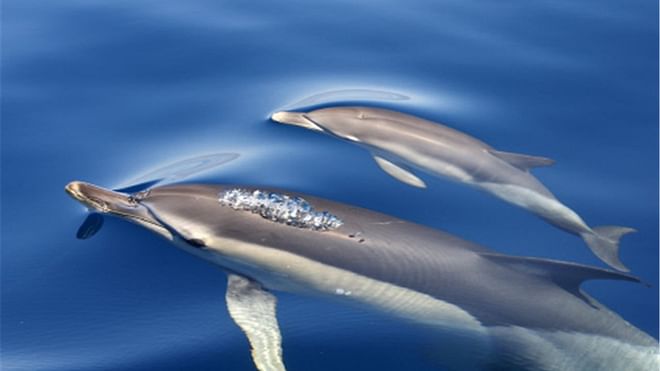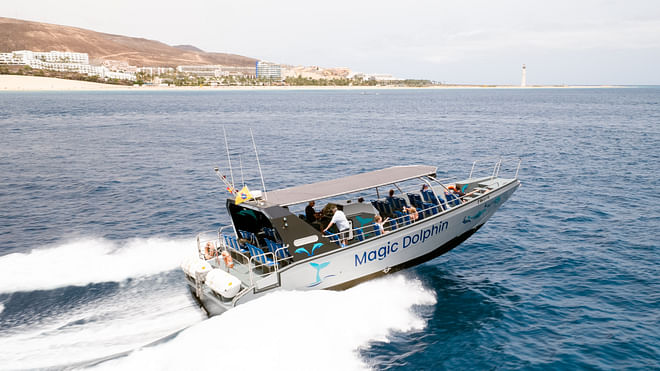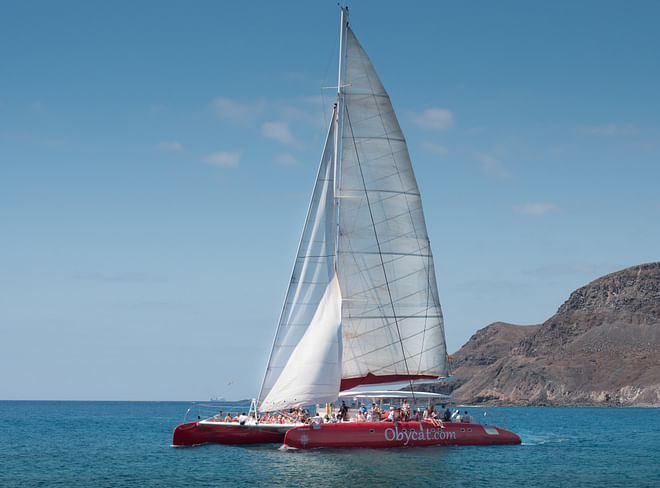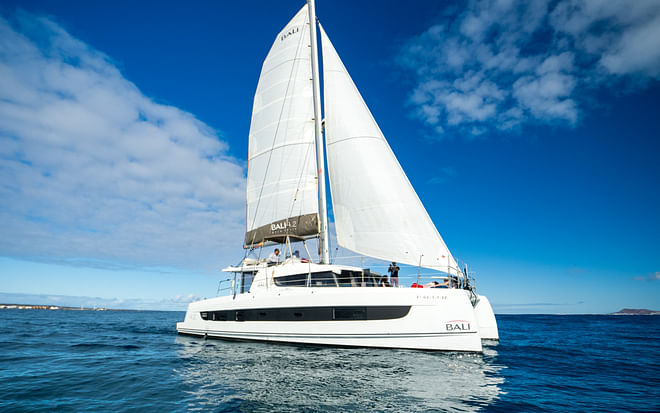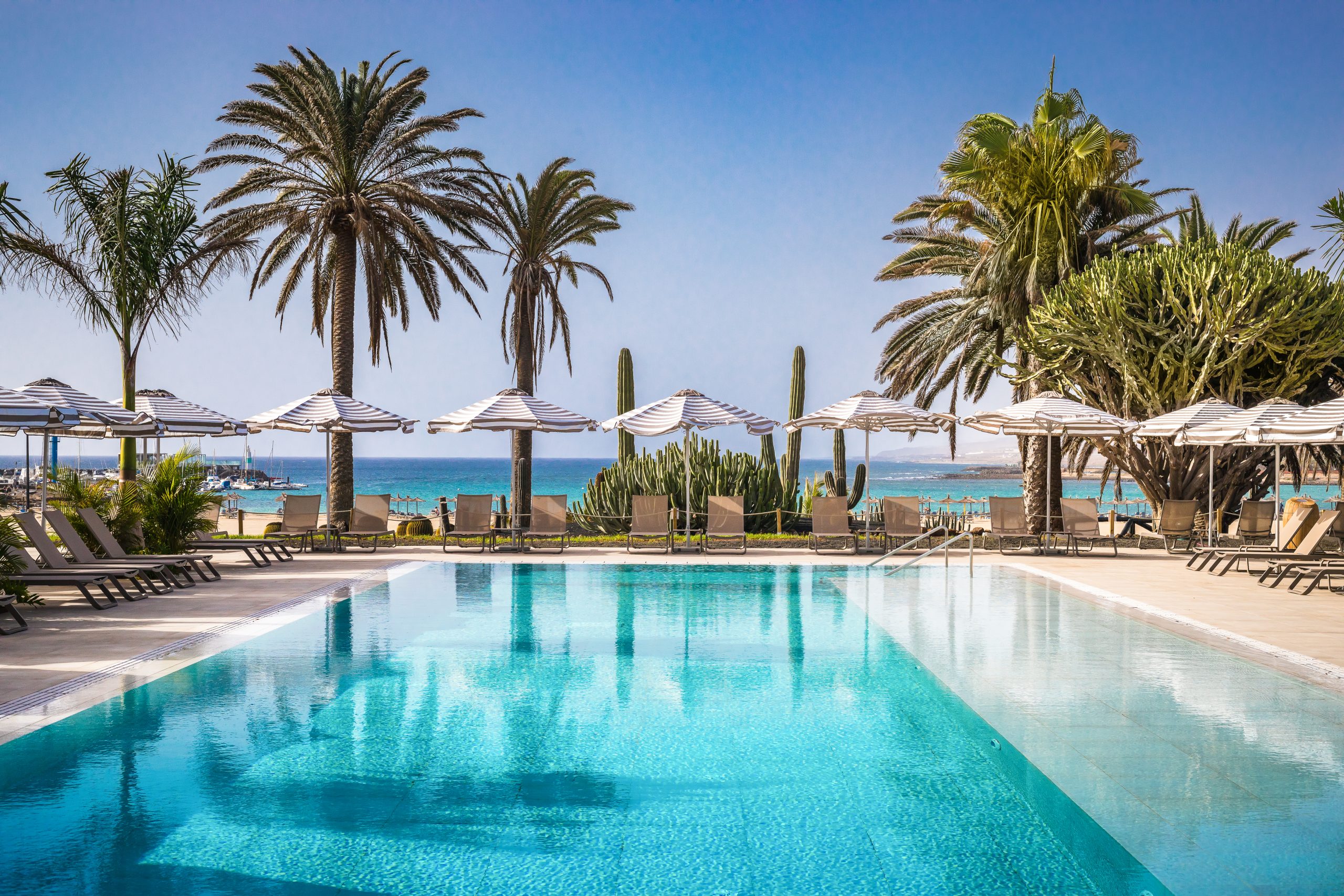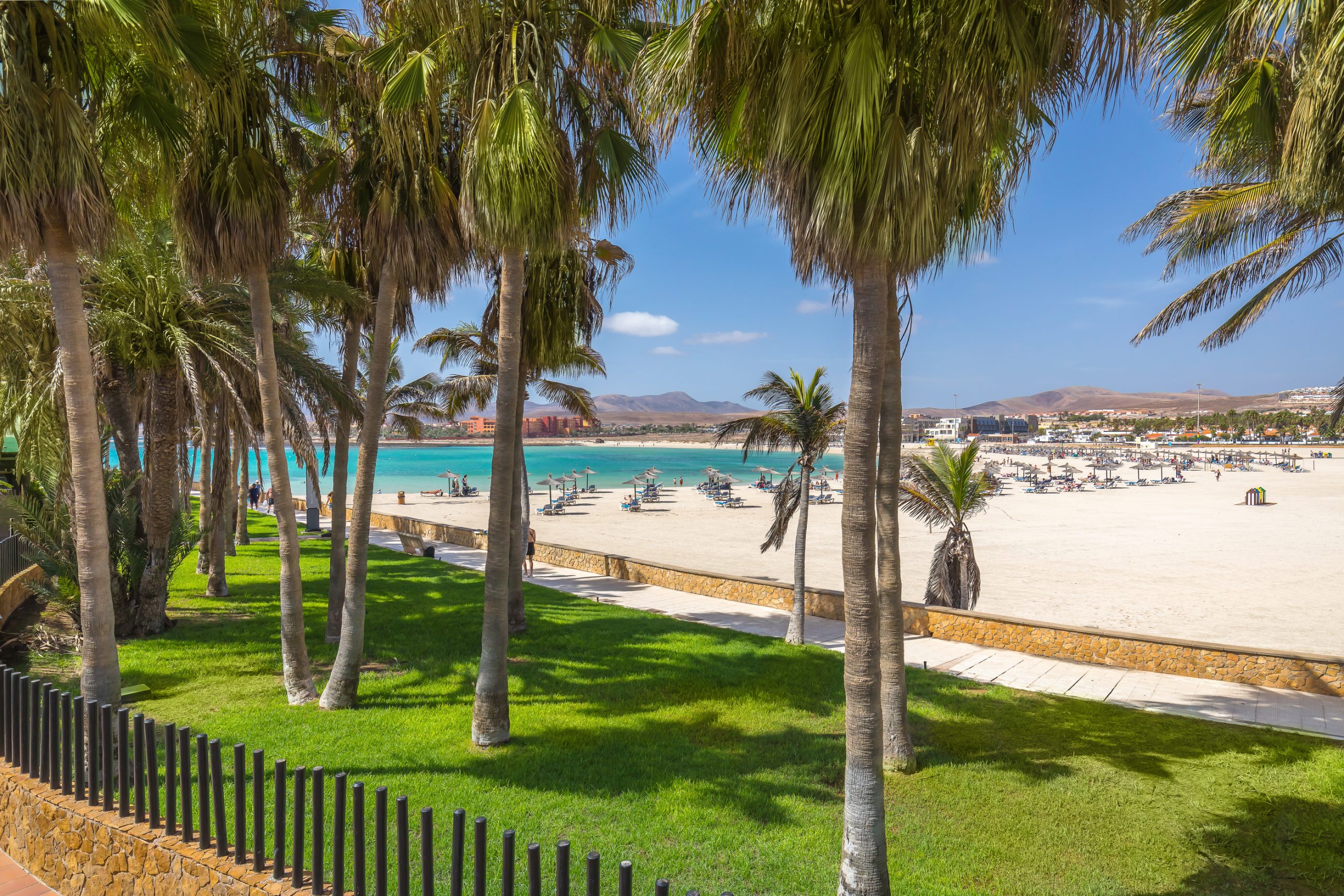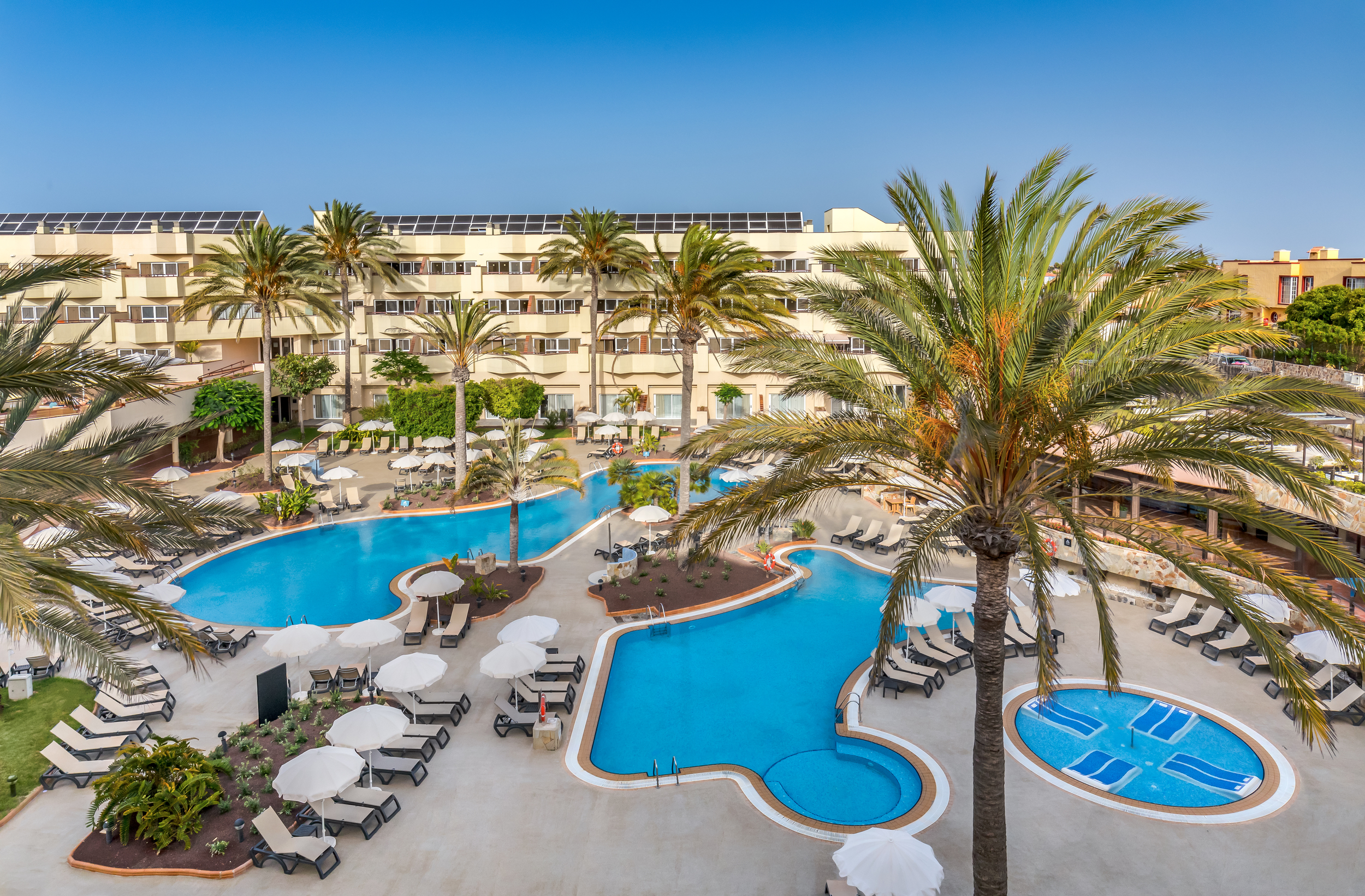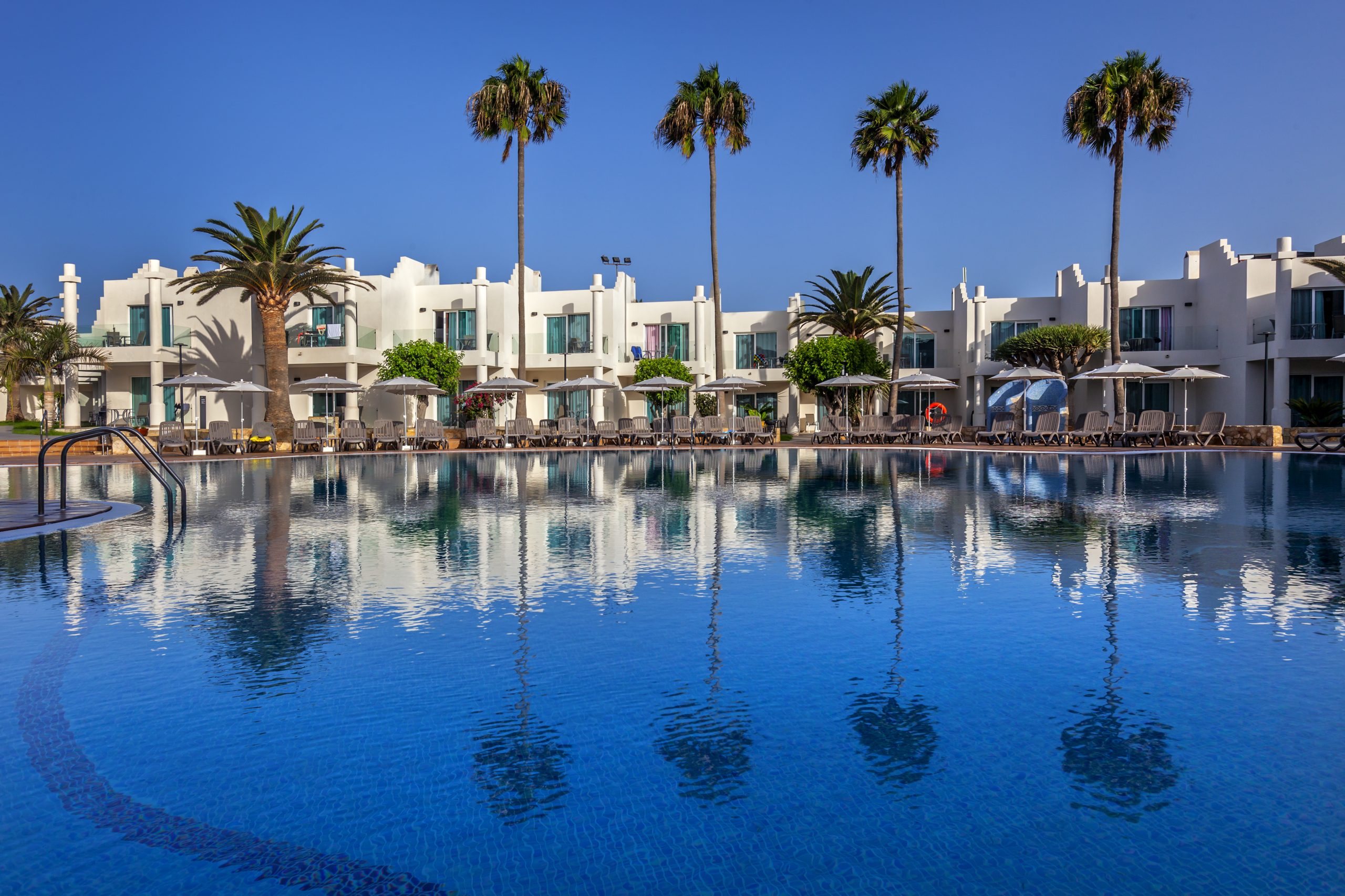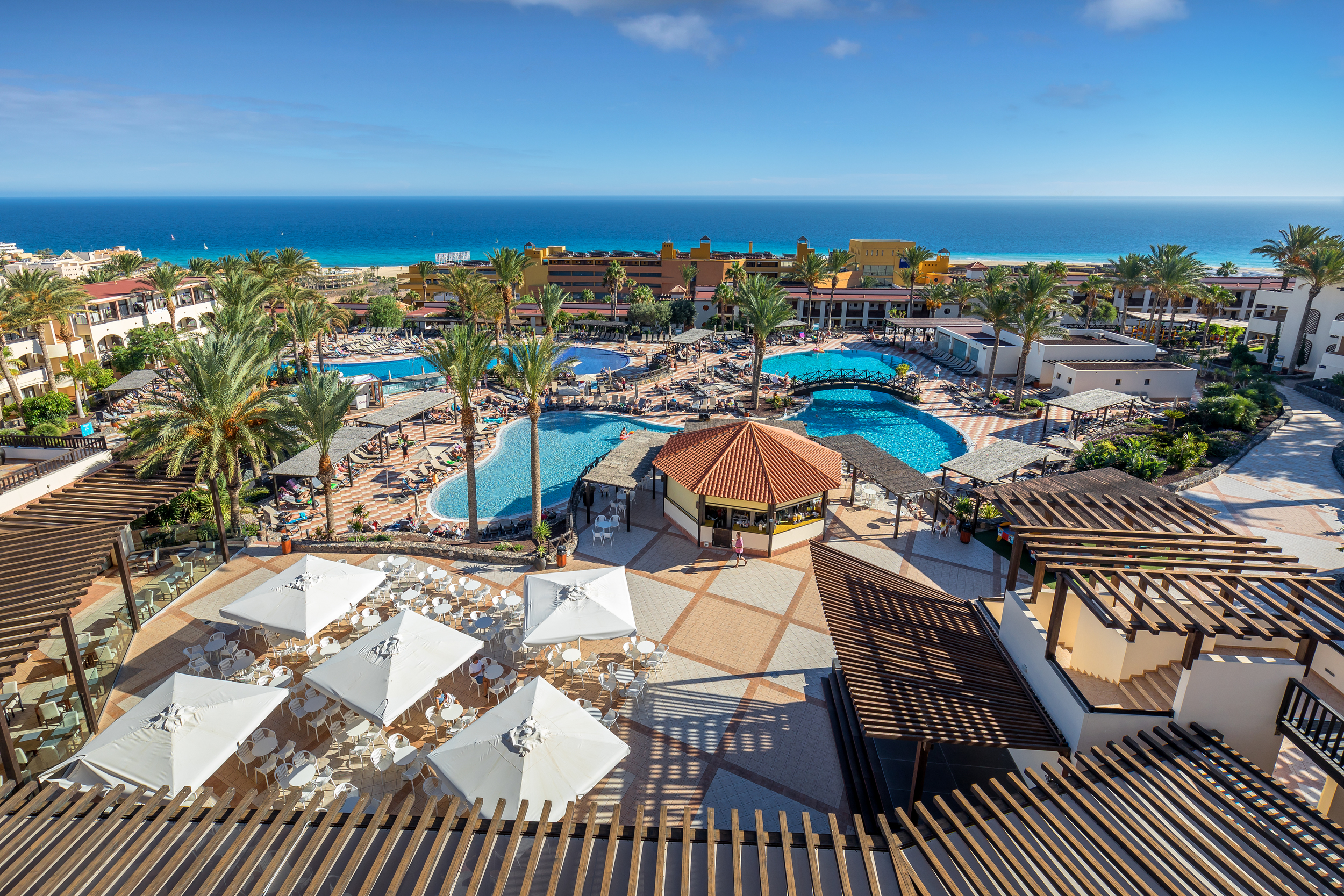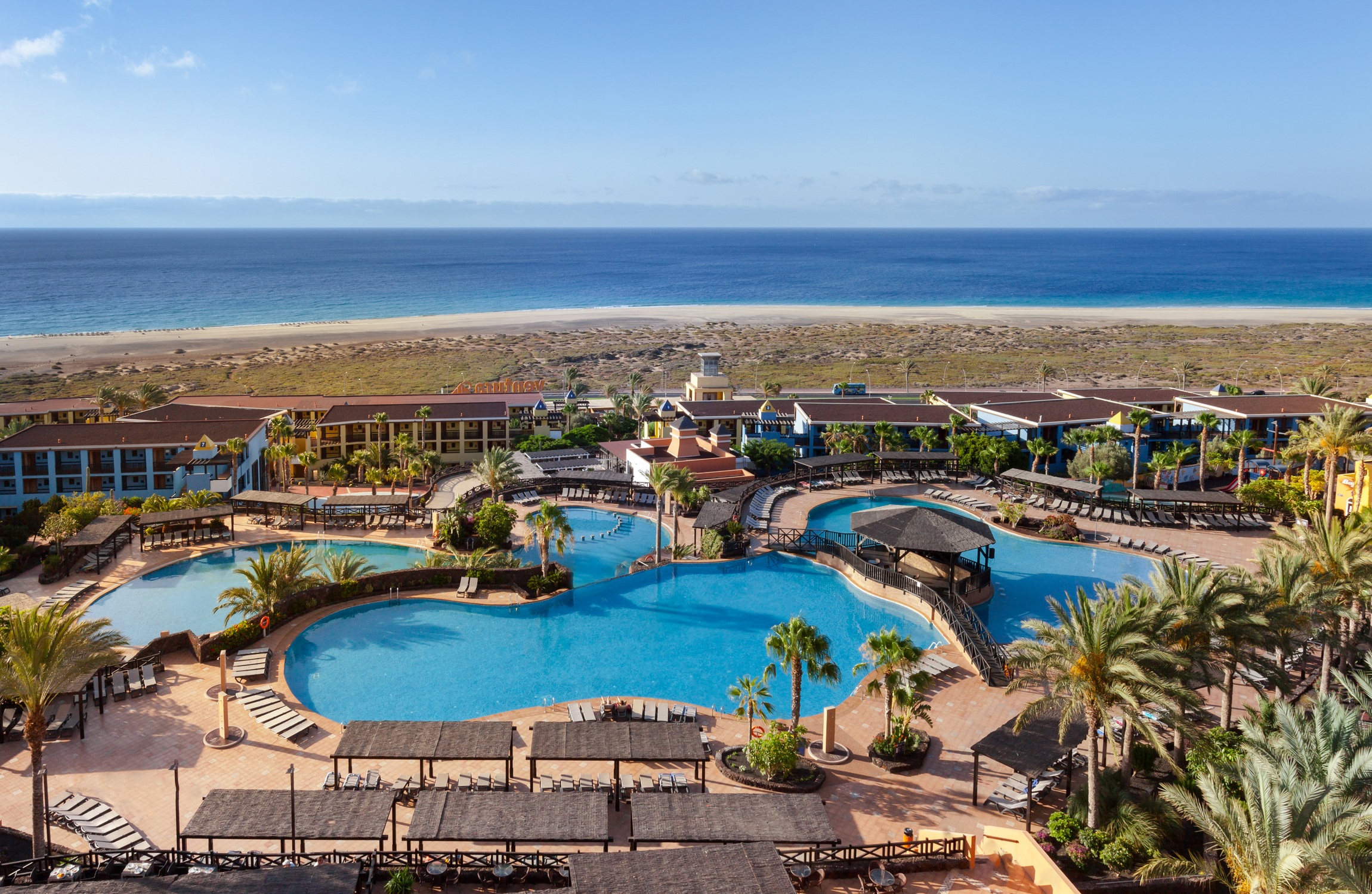Puertito de Los Molinos is a small fishing village in the municipality of Puerto de Rosario with a population of less than twenty. Among the reasons to visit this small place in the north-western central part of the island are the excellent food served at its restaurants and a wonderful beach that is perfect for surfing. Not forgetting, of course, a magnificent sea cave that can only be visited at low tide.
Just as unique is the name of the village (molinos means ‘mills’ in English), which alludes to a construction heavily associated with centuries-old agricultural and stockbreeding tradition in Fuerteventura: windmills, which are part of the island’s architectural tradition and are worth getting to know.
What to do in Los Molinos, a small village in Fuerteventura
This unassuming village boasts a beach with very few people and, tide permitting, you can even walk to the sea cave situated on the southern side of the magnificent cliffs that shelter the village. Another great thing to do is to go hiking along the riverbed of Los Molinos ravine, which comes to an end right at the village. Read on for more information:
-
Los Molinos beach
This beach is, like all those on the island, very exposed to the surf. As a result, in winter, the cove is covered in pebbles and stones due to the effect of the fiercest waves. Meanwhile in summer, when the sea calms down, pebbles give way to a blanket of brown-coloured sand. Its waters are perfect for surfing, a common characteristic of all the island’s beaches. However, due to the strong waves, take caution when swimming.
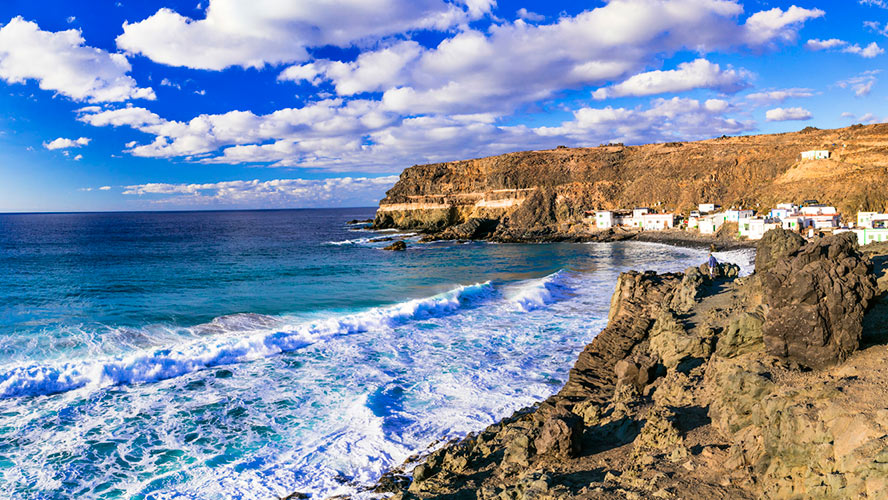
-
Los Molinos cave
Nestled in amid the cliffs on the southern end of Los Molinos beach are some sea caves that can be visited at low tide, when the ocean retracts, allowing you to walk along a spit of sand all the way there. To do so, be sure to check the tidal cycle, so you know exactly when the water level will rise again, if you don’t want to end up cut off from the outside world inside one of the caves (or worse).
Out of these caves, many of which are interconnected by arches formed by the cliffs themselves,
the so-called Herminia cave is the largest and most striking. It boasts a tall dome ceiling and from inside you can see the village and the sea framed in the distance.
The best time of year to visit the caves is in September when the so-called El Pino tide occurs, a very low tide that marks the autumn equinox in the area.
-
Los Molinos ravine trail
The eponymous ravine, which comes to an end in Puertito de Los Molinos, used to follow the course of a river (these days a stream as it flows from a reservoir situated at the highest point), which, over a long period, gradually eroded the land to form a snaking gorge with soaring rock walls.
Running parallel to the ravine’s riverbed is a path that is perfect for hiking. The trail switches between both sides of the ravine, which means you’ll have to cross the stream on several occasions. Since it only has a distance of around six kilometres, the route is easy, and hikers can enjoy both the unusual bare walls of the ravine, and the lush endemic vegetation on the banks of the stream.
Casa Pon and other restaurants for eating in Los Molinos
The village of Los Molinos is famous for offering excellent food at affordable prices. The restaurant Casa Pon has earned a reputation for serving delicious seafood-based cuisine. The establishment is famous for its fish, papas arrugadas and grilled cheese, as well as its fish and seafood paella and seasonal limpets.
Another good option is the bar restaurant El Puertito, where you can enjoy a snack or some tasty tapas. The establishment is highly original and offers magnificent views of the beach.
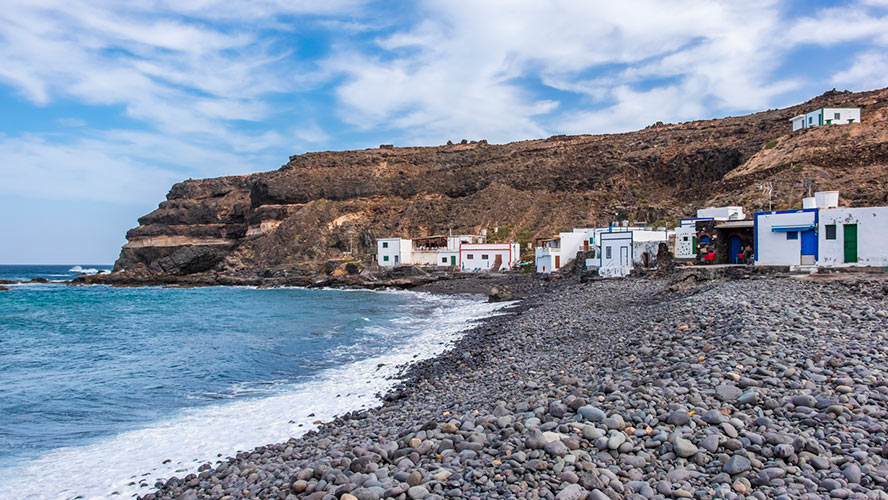
Fuerteventura’s windmills: a unique form of architecture
Inland Fuerteventura has long been home to a collection of traditional buildings with important ties to agricultural and stockbreeding tradition: the mills that harness the island’s wind, which is at its strongest in Fuerteventura out of all the islands.
The island boasts traditional windmills, albeit with local features. The buildings—made from stone, clay and lime—are circular-shaped with a conical structure and are crowned by wooden roofs, which is where usually four, or sometimes six, blades are placed. The buildings often have either two or three storeys, the ground floor being used to store the mill owner’s tools and the grain. Meanwhile, the top floor is where the grinding machinery is normally found.
However, the island also boasts another type of windmill for grinding grain, which is smaller in size. Invented in the nineteenth century, the quadrangular or rectangular buildings have only one storey, used for both milling and storage.
-
Molino de Antigua
The town of Antigua is a perfect place for discovering one of Fuerteventura’s most common structures, a fine example of which is the Molino de Antigua Craft Centre, an old restored mill that once produced gofio (a Canarian flour made from roasted grains), where you can see the interior and machinery of these traditional buildings. What’s more, the facilities boast an attractive garden and exhibition rooms dedicated to the archaeological remains of the island’s aboriginal past, as well as its artisanal traditions.
-
The Route of the Windmills
In the central part of Fuerteventura you can follow a trail that takes in an array of traditional mills. The route extends from the north to the south, from Corralejo to Tuineje, passing through various towns, such as La Oliva, Villaverde, El Cotillo, Tefía, Tuineje, Tiscamanita and Llanos de la Concepción. The entire inland plains are dotted with old mills situated in small villages, which loom tall amid fields and exotic vegetation.

























































